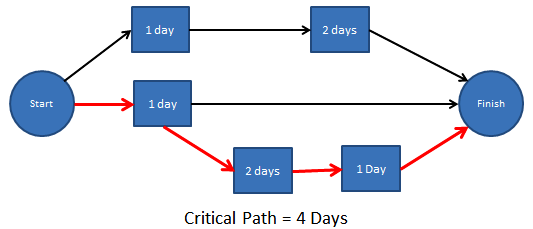The Critical Path is the longest path of scheduled activities that must be met in order to execute a project. This is important for Program Managers (PM) to know since any problems that occur on the critical path can prevent a project from moving forward and be delayed. Earned Value Management (EVM) analysis focuses on the critical path and near critical paths to identify cost and schedule risks. Other schedule paths might have slack time in them to avoid delaying the entire project unlike the critical path. There might be multiple critical paths on a project.

The Critical Path is determined when analyze a projects schedule or network logic diagram and uses the Critical Path Method (CPM). The CPM provides a graphical view of the project, predicts the time required for the project, and shows which activities are critical to maintain the schedule.
The seven (7) steps in the CPM are:
- List of all activities required to complete the project (see Work Breakdown Structure (WBS)),
- Determine the sequence of activities
- Draw a network diagram
- Determine the time that each activity will take to completion
- Determine the dependencies between the activities
- Determine the critical path
- Update the network diagram as the project progresses
The CPM calculates the longest path of planned activities to the end of the project, and the earliest and latest that each activity can start and finish without making the project longer. This process determines which activities are “critical” (i.e., on the longest path) and which have “total float” (i.e., can be delayed without making the project longer).
The CPM is a project modeling technique developed in the late 1950s by Morgan R. Walker of DuPont and James E. Kelley, Jr. of Remington Rand.